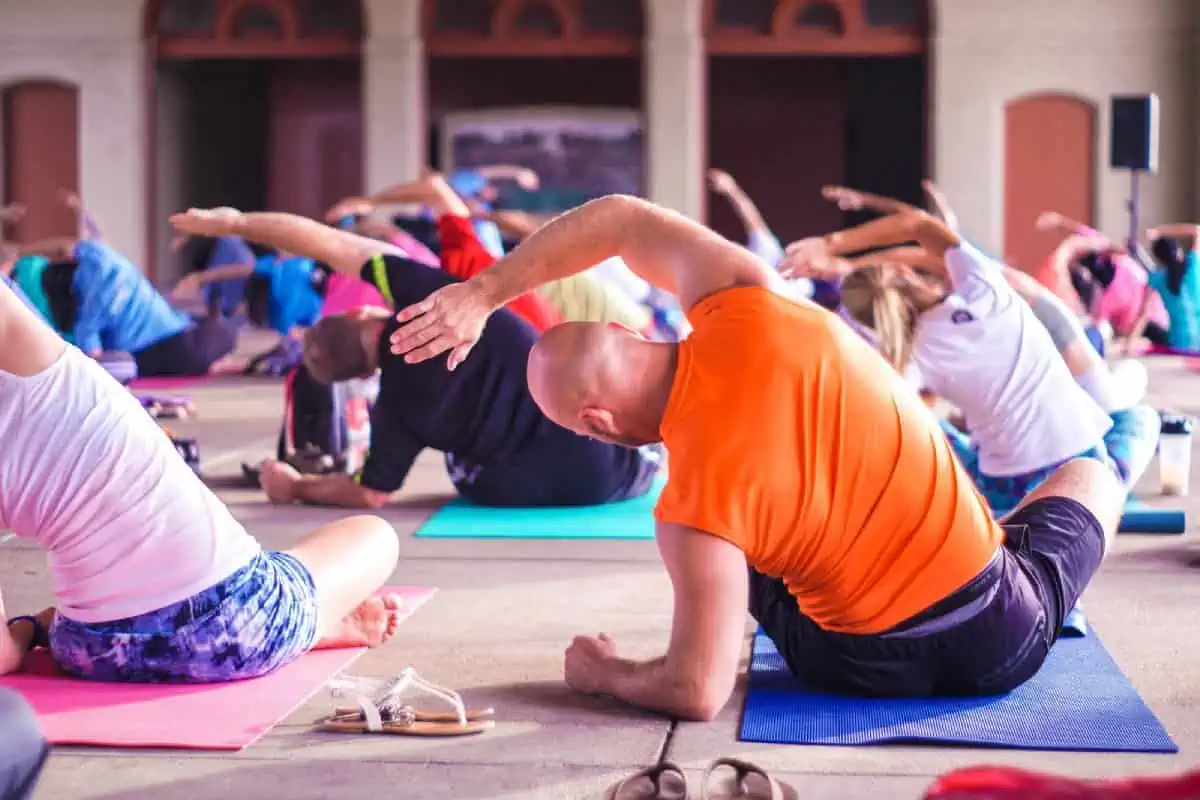Listen to this article:
Have you recently taken up yoga and are keen to learn everything about the practice? Or do you consider yourself a bit of a yoga connoisseur and want to test your knowledge? Either way, you’re in the right place.
In this article, we’re gonna take an epic road trip into the world of yoga, exploring every avenue and turn we find.
Whether you’ve just started practicing yoga or are a seasoned yogi, some of the following yoga facts are bound to surprise you.
Prefer video? Here’s one on 22 Surprising facts about yoga!
Contents
- 1 22 Intriguing Yoga Facts You Probably Didn’t Know
- 1.1 300 million people practice yoga worldwide
- 1.2 Of all yoga practitioners, 72% are female
- 1.3 Americans spend $16 billion on practicing yoga each year
- 1.4 A Yoga Mat Once Retailed for $100,000
- 1.5 Yoga is (at least) over 5000 years old!
- 1.6 The original purpose of yoga was self-realization (to reach a state of liberation)
- 1.7 Increased flexibility is the biggest reason people practice yoga today
- 1.8 Yoga is scientifically proven to alleviate symptoms of various medical problems
- 1.9 Ancient yogis believe our breathing rate determines our lifespan
- 1.10 There are now over 100 yoga styles!
- 1.11 Asana (yoga poses) is only one aspect of yoga
- 1.12 Yoga is a Sanskrit word meaning “union”
- 1.13 The world’s largest yoga lesson had 100,984 attendees
- 1.14 There are around 200 yoga poses in contemporary yoga, but 84 traditional asanas
- 1.15 Headstand is the most dangerous yoga pose
- 1.16 Many yoga poses can be modified
- 1.17 The world’s oldest yoga teacher taught yoga until she was 101
- 1.18 There have been many scandals in the yoga world
- 1.19 Yoga is for ALL bodies
- 1.20 You can go on a yoga vacation
- 1.21 Yoga can make you a better person
- 1.22 Yoga changes your brain structure
- 2 Final Thoughts On Facts About Yoga
22 Intriguing Yoga Facts You Probably Didn’t Know
Ready to have your mind blown? Check out these fascinating yoga facts!
300 million people practice yoga worldwide
Unless you’ve lived under a rock for the last 5 years, you’ll know that yoga is trendy. Nowadays, you can find yoga studios in almost every country.
But just how many people are practicing yoga? According to the latest research statistics from Zippia, there are approximately 300 million active yoga practitioners worldwide. 36 million of these are based in the USA.
Granted, 300 million seems like a lot of people! But when you look at how many people there are living on planet Earth, you’ll see there is still much room for growth. As of November 2022, there are approximately 8 billion people in the world; yes, you read that right.
So, if you do the maths (or Google it as I did), you’ll soon realize that 300 million is only 3.75% of the global population.
Of all yoga practitioners, 72% are female
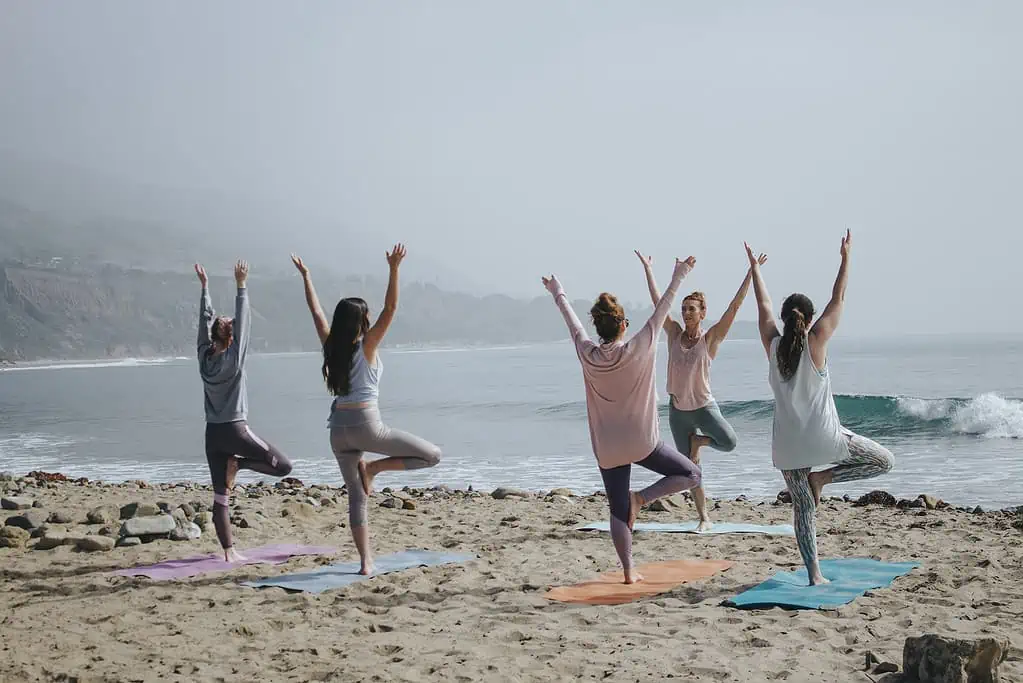
If you practice yoga in the Western world, most of your class is likely female. Sure, you get the odd male here and there, but yoga in the West is much more popular with women than men.
Interestingly though, it was men who first started practicing yoga in India all those years ago. All the most famous “ancient yogis” were men. For example, the Patanjali Yoga Sutra was supposedly compiled by a male. Likewise, Krishnamacharya, arguably the most renowned yoga guru ever, was male.
Going further, if you look at Krishnamacharya’s seven leading yoga students, only two were female – Vanda Scaravelli and Indra Devi. Moreover, if you go to stay in a traditional Ashram in India, you’ll notice there are many more male yoga practitioners there than in the West.
Thus, considering the history of yoga, it may be surprising to hear that according to research by Yoga Journal and Yoga Alliance, 72% of yogis worldwide are female. However, research has found that yoga is becoming more popular with men every year.
Statista explored this gender gap further and found that the ratio of women to men in the USA is 30:11. Meanwhile, in India, it is almost equal at a ratio of 31:24.
Americans spend $16 billion on practicing yoga each year
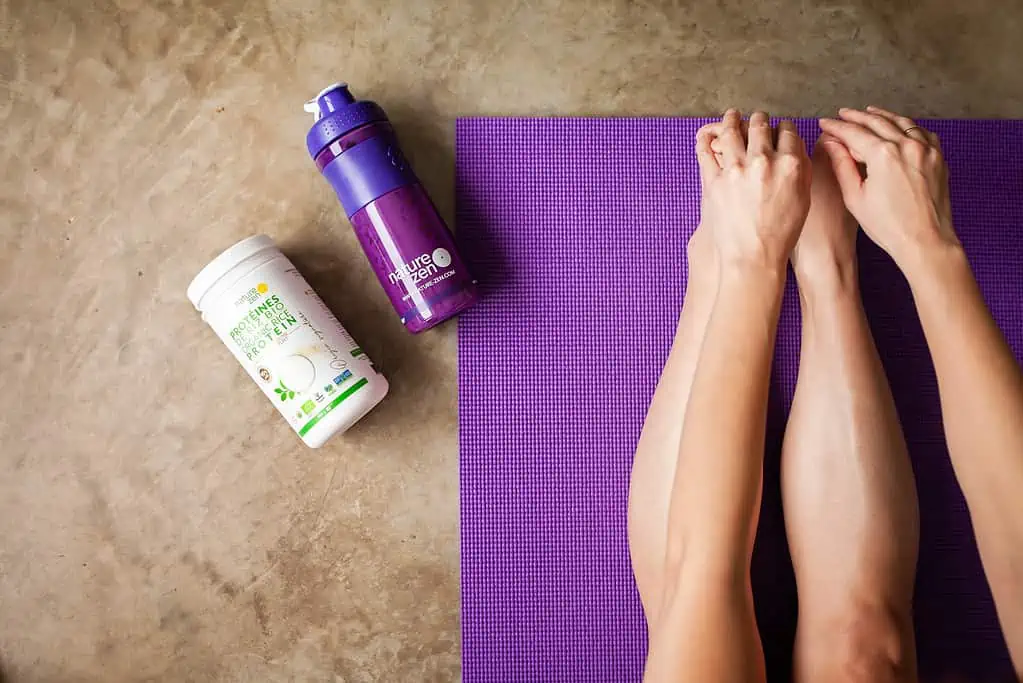
Yoga’s popularity has resulted in yoga becoming a multi-billion dollar industry in the USA. Statistics show that Americans spend over $16 billion annually on yoga classes, equipment, and apparel. This is a combination of the increase in demand, the number of yoga studios, and the growth of yoga apparel and equipment brands like lululemon.
lululemon is easily the most popular yoga apparel brand, making a staggering profit of over $7 billion in 2022. Aside from their yoga pants which are their most popular item, lululemon’s yoga mats are a firm favorite among US yogis. Yoga mats are by far the most popular yoga equipment purchased, and the global yoga mat market was valued at $13.3 billion in 2018.
A Yoga Mat Once Retailed for $100,000
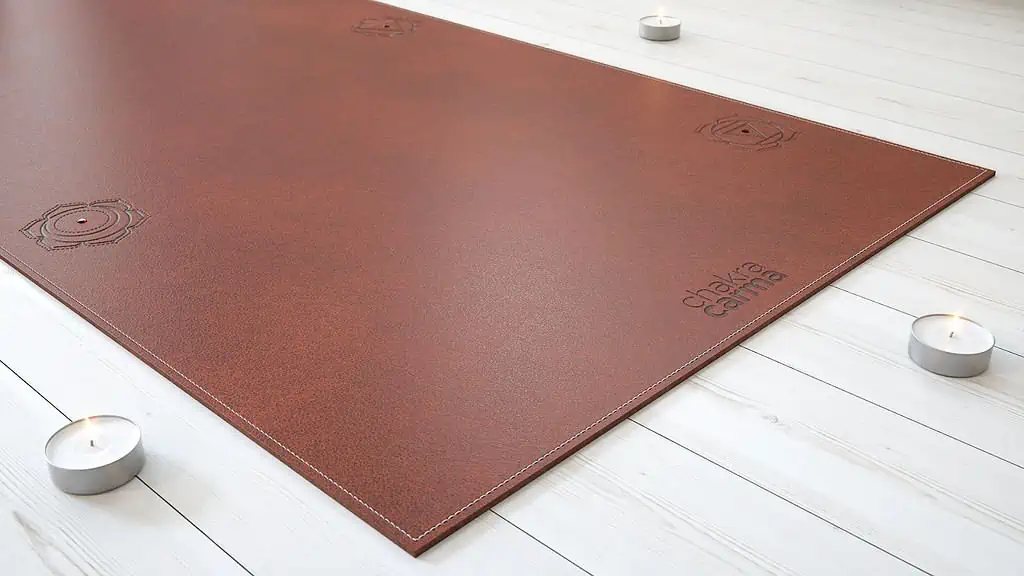
It’s not just the USA making money from yoga. The global yoga industry is worth more than an eye-watering $88 billion!
One reason could be that companies are making ridiculously expensive designer yoga mats. The most extreme was the Chakracarma mat, which had a mind-blowing price tag of up to $100,000.
Why was it so expensive? The mat was handmade in Los Angeles using vegetable-tanned leather. It was then adorned with gemstones such as diamond, ruby, emerald, sapphire, amber, opal, and carnelian. The crystals you chose and the carat and engravings determined the final price, which would be between $15,000 and $100,000.
Don’t worry, though, as this is not an average price for a yoga mat. Yoga mats can be made from different materials, such as rubber, Jute, or TPE. Natural rubber yoga mats are of the highest quality, like lululemon’s The Mat 5mm, which retails at around $100. TPE mats are cheaper, like the Heathyoga Eco-Friendly Non-Slip Yoga Mat, which is less than $50.
Yoga is (at least) over 5000 years old!
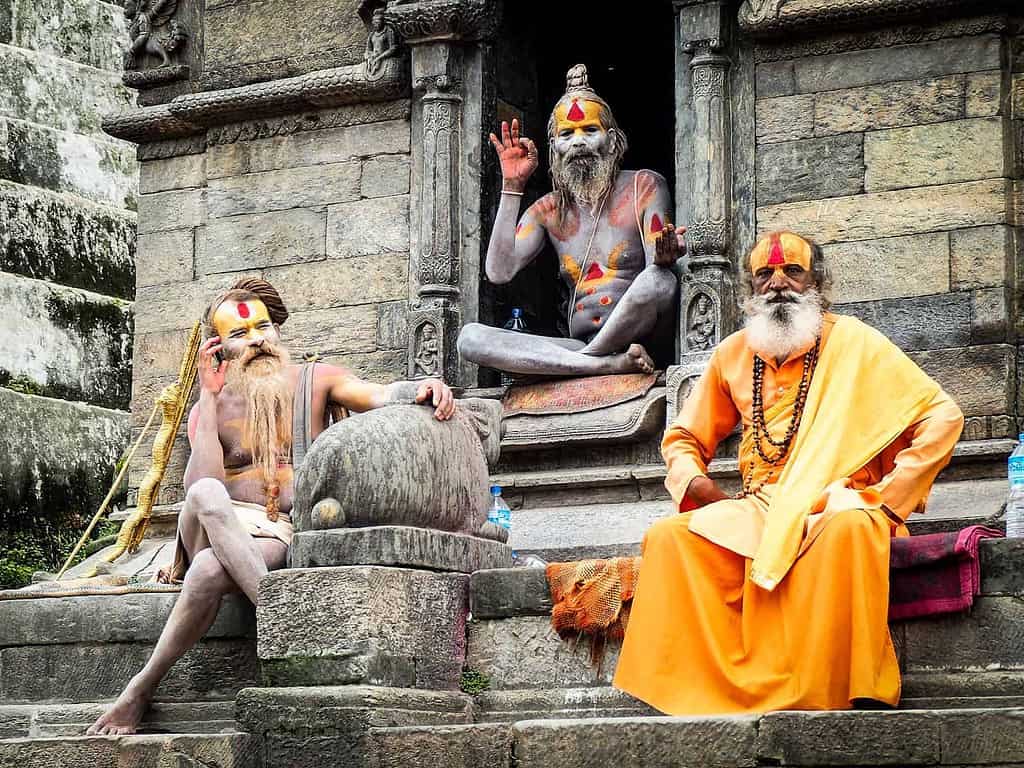
While the astonishing amounts of money made from yoga have only happened in the last 10 years, the practice has been around for much longer.
The first record of the word yoga was in the Rig Veda (the first of the four ancient yogic texts known as the Vedas). This text was composed sometime between 1500 and 1000 BCE. Still, it is believed the teachings of the Vedas had been orally transmitted since the 2nd millennium BCE.
Despite its long history, yoga was not introduced to the Western world until the 18th century.
The original purpose of yoga was self-realization (to reach a state of liberation)
There are many reasons why people practice yoga today. However, few practice it with its original purpose as their goal. Patanjali’s Yoga Sutras, one of the oldest and most important texts, reveals the true aim of yoga practice is self-realization. This means becoming free of the mind and all its suffering and reaching enlightenment, freedom, and inner peace.
Sure, we may do yoga today as it makes us feel peaceful. Still, spiritual enlightenment is not something the average Western yoga practitioner is seeking.
Increased flexibility is the biggest reason people practice yoga today
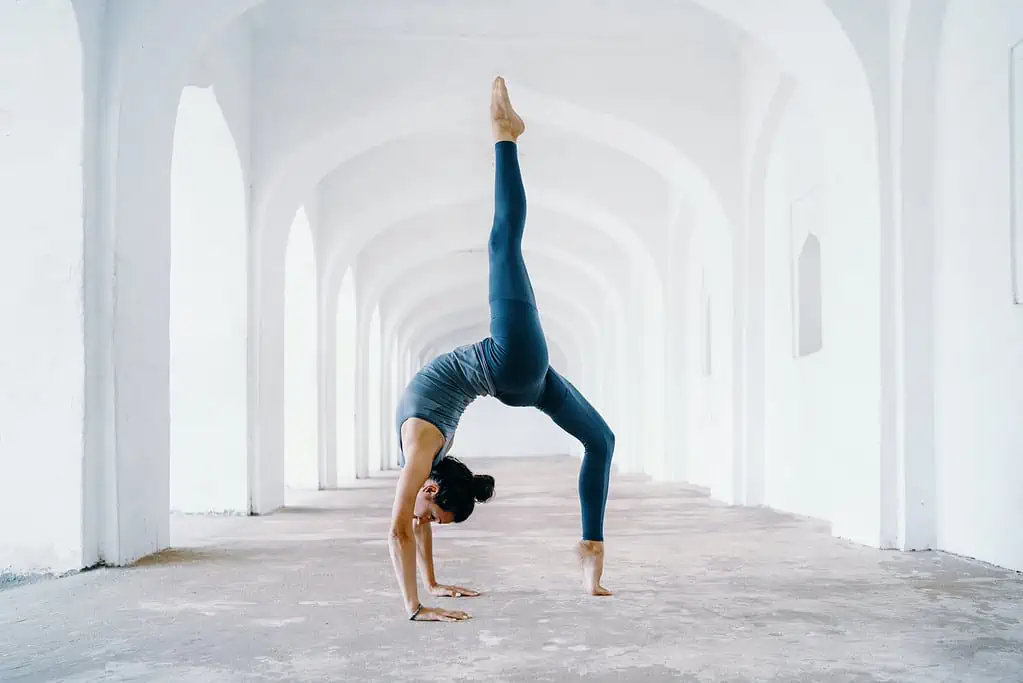
I know that last yoga fact left you wondering, so why do most people practice yoga today? Here is your answer.
According to statistics from Zippia, 61% of people do yoga to improve mobility and flexibility or release physical tension. This is closely followed by the second biggest reason: to relieve stress or improve mental health.
Regularly practicing yoga can positively impact our physical and mental health in various ways. For example, regular yoga sessions increase energy levels, improve sleep, reduce back pain, improve posture, reduce anxiety, and so much more.
Yoga is scientifically proven to alleviate symptoms of various medical problems
Yoga carries many surprising health benefits. For example, healing yoga practices have been shown to significantly lower high blood pressure.
This is mainly due to the deep breathing component. Yoga teaches you to take slow and deep breaths, which increases sympathetic nerve activity and reduces vagal cardiac tone, lowering stress and high blood pressure.
Ancient yogis believe our breathing rate determines our lifespan
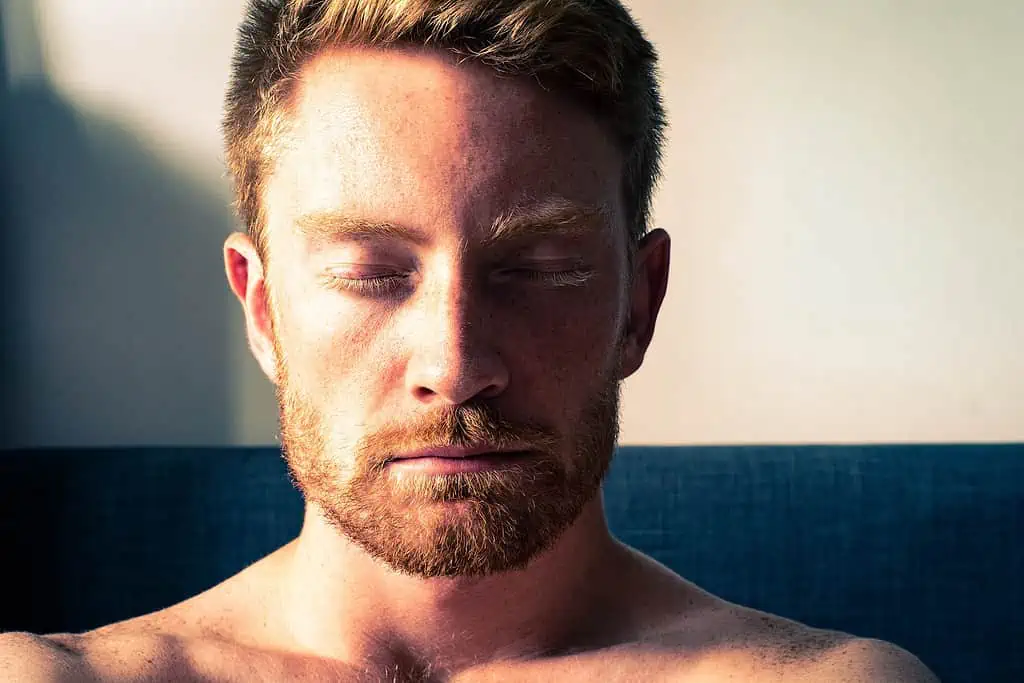
Here’s one of the coolest facts about yoga (in my opinion). Many ancient Indian yogis believe that humans only have so many breaths in their lives. So by breathing slower, you “save” your breaths and, thus, live longer.
For example, the famous yogi and mystic Sadhguru teaches that our breath and the planet’s cycles are closely linked. He says that the average person lives for 84 years and takes 15 breaths per minute (21,600 breaths a day).
However, if you can drop your breathing rate to 12 breaths a minute, you can extend your lifespan to 108 years. If you take 9 breaths per minute, you will live even longer, up to 124 years. Thus, the breathing exercises you do in yoga can help you live a longer and healthier life.
There are now over 100 yoga styles!
If you’re an avid yogi, you’ll already know many different styles exist. You may have tried the classics, Hatha yoga, Ashtanga, Vinyasa, and hot yoga. But you probably wouldn’t guess there are more than 100 styles in total!
This crazy figure comes from The American Yoga Association, which includes many of the modern controversial and questionable yoga styles like goat yoga, naked yoga, and laughter yoga. But, of course, most are not what you call classical yoga, as they are far removed from the ancient yogic philosophy.
Also, almost all modern-day yoga styles originate from just one of the 6 yoga branches – Hatha yoga. The other branches of yoga are:
- Raja yoga – the yoga of mind and body control
- Jnana yoga – the yoga of wisdom
- Bhakti yoga – the yoga of devotion
- Karma yoga – the yoga of selfless action
- Kriya Yoga – the yoga of awareness (practices such as Kundalini yoga that focus on cultivating Kundalini energy)
Asana (yoga poses) is only one aspect of yoga
Most modern-day yoga classes focus predominantly (or solely) on physical practice (asanas). However, many people practicing yoga don’t realize that yoga postures are only a tiny aspect of yoga practice as a whole.
In the yoga sutras, Patanjali explains how there are 8 limbs of yoga, all of which must be followed to be a true yoga practitioner. Aside from asana, the limbs include Yamas and Niyamas (guidelines of how you should act towards others and yourself), pranayama (breathing techniques), meditation, and concentration.
Yoga is a Sanskrit word meaning “union”

You’ve probably heard the word yoga so often that you assume it’s an English word. However, yoga is Sanskrit, one of the oldest Indo-European languages from the Vedic era. As yoga originated from this period, all the oldest texts that mention yoga are in Sanskrit.
These texts have been translated, but the word yoga was not renamed to an English alternative. Yoga translates to “to yoke” or “to unite”; thus, yoga is believed to mean a union between the body, mind, and spirit.
You may also be surprised to learn that many other words you’ve heard in yoga class are Sanskrit. For example, all the classical yoga poses originally had Sanskrit names, which were then given an English alternative. However, many yoga teachers use both terms to respect the practice’s origins.
For example, the familiar pose downward dog is called Adho mukha svanasana, the Triangle pose is trikonasana, and the Child’s pose is Balasana. Asana is a Sanskrit word itself, meaning seat or posture.
The world’s largest yoga lesson had 100,984 attendees
Have you ever been in a packed yoga class? One where you were so close to your neighbors you had to be careful not to accidentally hit them when sweeping your arms up from Uttanasana to Tadasana? Well, spare a thought for the 100,984 yogis who attended the same class in Rajasthan, India, on 21 June 2018!
This huge yoga event is the largest yoga class in the world to date and even broke the previous Guinness world records. It was organized by the Government of Rajasthan as a special event for International Yoga Day. You’ll be pleased to hear it was conducted in an open outdoor space, not in a studio!
There are around 200 yoga poses in contemporary yoga, but 84 traditional asanas
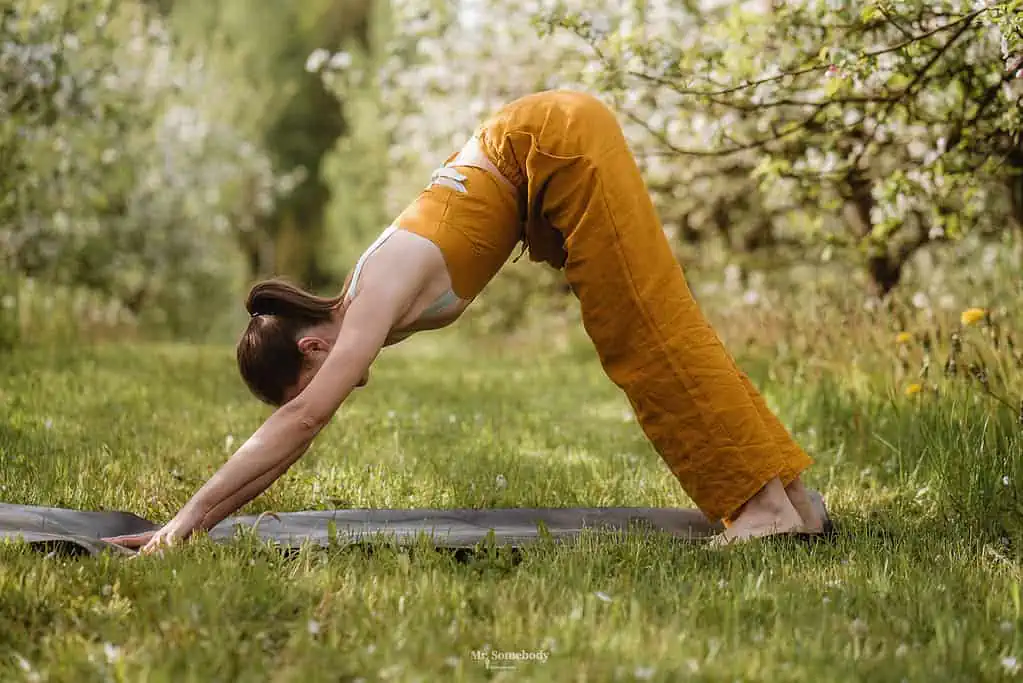
With the ever-increasing number of new yoga styles like power yoga, yin yoga, and laughter yoga, the number of yoga poses is also on the rise. Today, you can find around 200 yoga postures in total, but traditionally, there are much fewer.
The 11th-century yogic text Goraksha Samhita and the 15th-century text Hatha Yoga Pradipika describe 84 postures as part of classical yoga practice. These include all the most popular yoga poses like Lotus pose, Bhujangasana (Cobra Pose), Virasana (Hero’s Pose), Dhanurasana (Bow Pose), Adho Mukha Svanasana (Downward Dog), and Savasana (Corpse Pose).
Headstand is the most dangerous yoga pose
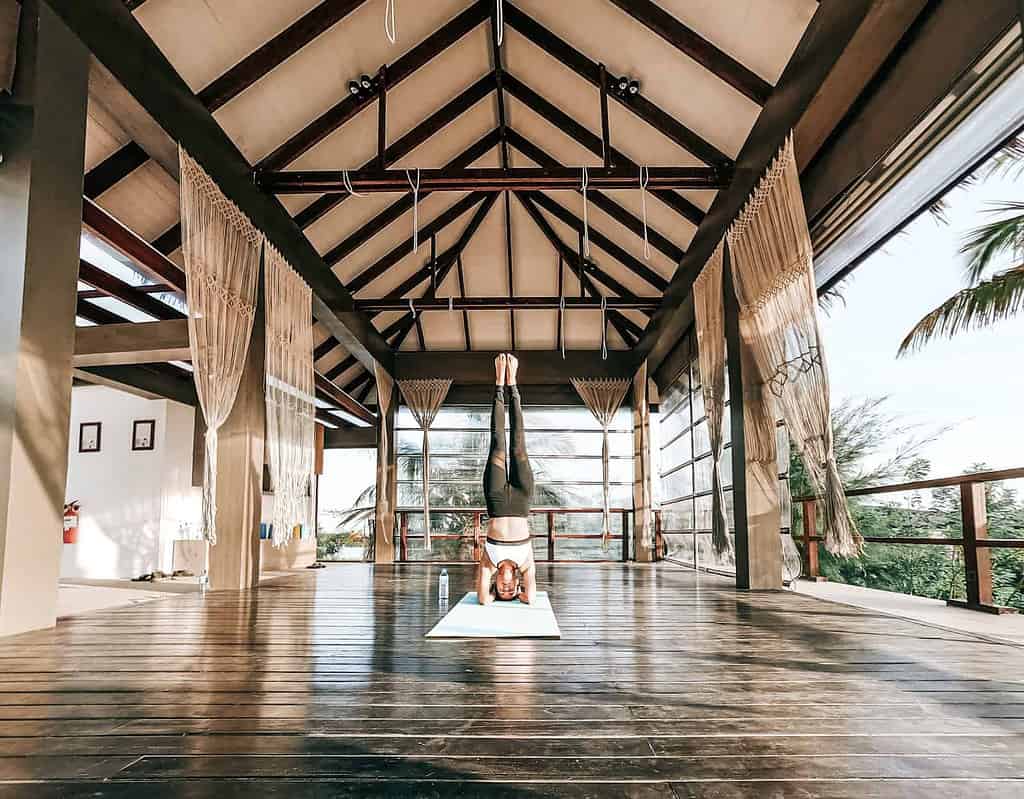
Yoga is often promoted as a gentle form of exercise. However, when you start practicing it you quickly realize it is more challenging than you anticipated. Moreover, there are some very advanced yoga poses, several of which can be dangerous if not practiced correctly and under the guidance of a certified yoga instructor.
Many health experts claim that Headstand (Sirasana) is the most dangerous yoga pose, especially the unsupported one called the Tripod Headstand. This is because it involves placing your entire body weight on your head, which can easily cause injury to the neck.
If you have a sensitive neck or have had previous neck problems, you should skip this pose altogether. However, beginners should always practice the supported headstand variation and focus on pressing the forearms into the ground to relieve pressure from the head. Most importantly, don’t attempt this pose on your own; only do so under the guidance of your yoga teacher.
Many yoga poses can be modified
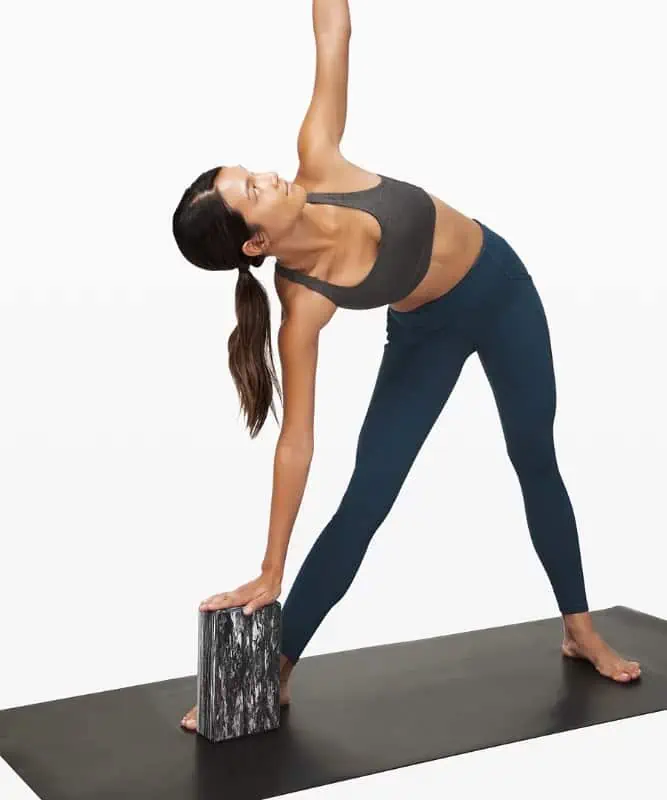
While yoga injuries do happen, there are ways you can prevent them. Aside from practicing with a certified yoga teacher, many different props can be used to modify poses and make them more comfortable and accessible for you.
A yoga block is the most common prop. It can be used in various ways and many different postures. For example, if you cannot reach your lower hand to the floor or your ankle in the Triangle pose, you can place it on a block by your foot instead.
Or, if you are learning the Warrior 3 pose but are struggling with balance, place 2 blocks at the top of your mat, one on each size. Place your hands on the blocks as you extend your back leg up and your torso down, bringing them in line with each other. The blocks will give you stability so you can focus on alignment without the worry of falling.
Most yoga blocks are made from foam, like the Lift and Lengthen Yoga Block by lululemon, or natural cork, like this one from Gaiam.
If you have sensitive knees or past knee injuries, I recommend using knee cushions. These from Zealtop have a 15mm thick high-density padding and a non-slip base, offering additional support in kneeling postures like cat/cow and kneeling lunge.
The world’s oldest yoga teacher taught yoga until she was 101

Tao Porchon-Lynch, born in India, is one of the most famous yoga teachers, partly because of how many years she practiced and taught yoga.
Tao is the world’s oldest yoga teacher as she continued to teach yoga classes until her death at 101 years old. Moreover, Tao started practicing yoga when she was 8 years old. She then practiced it until she died, meaning she practiced yoga for an astonishing 93 years.
Thus, Tao is a living example that regular yoga practice promotes long-term good health and can even extend your lifespan. This is backed up by a study by the US National Library of Medicine. The study found practicing yoga regularly can delay the aging process and prevent the onset of many age-related diseases.
There have been many scandals in the yoga world
You may assume that all yogis are pure, ethical beings who treat everyone with loving kindness. But unfortunately, even the yoga industry is not exempt from corruption. There have been some massive scandals relating to some of the most popular yoga styles and famous yoga teachers.
For example, in 2014, the founder of the well-known Bikram yoga style, Bikram Choudhury, was sued by multiple women for various allegations, including physical harassment and assault.
There have also been scandals in yoga schools worldwide, such as Agama Yoga on the Thai island of Phangan. Her former pupils and staff accused the founder Swami Vivekananda Saraswati of operating a “cult,” and several formal accusations of inappropriate behavior were filed.
Yoga is for ALL bodies

Unfortunately, there is a misconception in the Western world that you must be skinny and naturally bendy to be a yogi. However, this is not the case at all. Yoga suits all body types, shapes, ages, and backgrounds.
Nowadays, there are yoga classes aimed at particular demographics who may find a general yoga class difficult. For example, you can find:
- Yoga classes for the over 50 so the older yoga community can practice in a safe and supportive way
- Chair yoga for those with limited mobility
- Prenatal yoga, which is specially designed to help pregnant women prepare for a healthy birth
- Postnatal yoga to rebuild the pelvic floor muscles after giving birth
- Mum and baby yoga so new mums don’t have to give up their practice if they can’t find childcare
- Children and teens’ yoga classes taught in schools and community centers
- Men’s yoga, commonly known as Broga, to inspire more men to practice yoga
- Prison yoga – that’s right, even inmates in certain parts of the world have the opportunity to learn yoga
- Fitness yoga – It is often taught in gyms and focuses purely on physical fitness, removing all spiritual aspects of the practice
- Yoga therapy – a healing and therapeutic style taught in many health centers
You can go on a yoga vacation

Yoga has become so popular that you can now find many “yoga vacations” worldwide. Yoga retreats are designed for yoga lovers who want to incorporate their favorite practice into their vacation. They give your annual vacation a more profound sense of purpose and meaning. Instead of lounging by the pool all day, you work on your personal and spiritual growth.
Some yoga retreats are very relaxed; you attend one or two classes daily and have the rest of the day to do as you like. Others are more structured with workshops, meditation, breathwork sessions, and group trips to see the local sights.
There are tons of yoga retreats in India, which I recommend to anyone who wants to visit the birthplace of yoga and learn all about yoga history. However, suppose you wish to add a bit of wellness to your standard holiday. In that case, you’ll find yoga vacations in all the popular tourist destinations.
Yoga can make you a better person
One of the most interesting facts about yoga is that it can change who you are. Research has found that regularly practicing yoga boosts self-confidence and self-esteem, improving overall self-image.
It also changes how you see life and opens you up to new perspectives. This is why many yoga practitioners find they adopt healthier habits like eating better or going to bed earlier after practicing yoga for some time.
Yoga changes your brain structure

Yoga can also make you a better person because it rewires neural pathways in the brain that relate to behavior, habits, and thoughts. Yoga has also been shown to strengthen the parts of the brain related to memory, attention, awareness, thinking, and language.
Thus, yoga can assist you in your personal development journey and help you to let go of bad habits, limiting beliefs, and negative thought patterns.
Final Thoughts On Facts About Yoga
As you can see, there are many interesting facts about yoga. How many were you unaware of before today? Which one surprised you the most? Was it the one about the $100,000 yoga mat, the possibility of yogic breathing being able to extend your life or one of the many other eye-opening yoga facts on this list? Let us know in the comments below.


